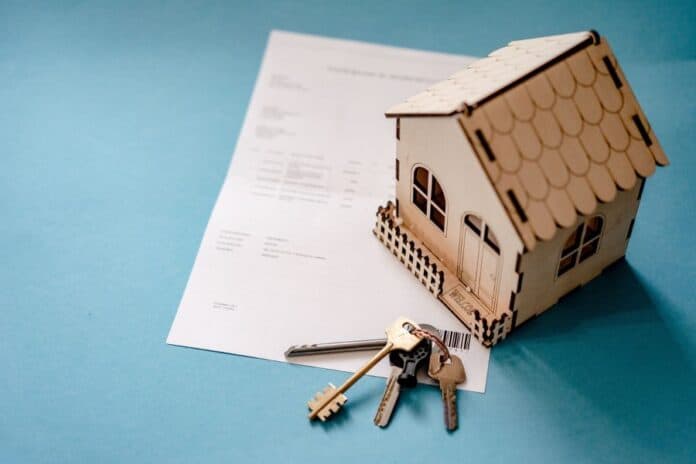If you’re evaluating fix-and-flip, BRRRR, or value-add projects, you’ve probably asked what ARV is in real estate and why so many investors obsess over it. ARV—short for after-repair value—estimates what a property should sell for once it’s fully renovated to market standards. It’s the anchor for offer pricing, construction budgets, lending terms, and projected profits. Get ARV wrong, and everything downstream—holding costs, equity, exit timeline—gets riskier.
To calculate ARV, investors combine true comparable sales with realistic repair scopes, then test the result against neighborhood trends and lender appetites. Understanding what is arv in real estate also means knowing what it isn’t: it’s not a wishful list price, not your contractor’s highest-gloss finish, and not a free pass to ignore days on market. In this guide, you’ll learn the formula, comp selection, repair-cost modeling, and common pitfalls—so you can value deals with the same discipline appraisers and experienced flippers use.
What is arv in real estate?
ARV (after-repair value) is the estimated market price of a property after it’s fully renovated. To find it, analyze recent comparable sales with similar size, location, and finish level, then add realistic repair costs to your pricing model. Lenders and investors use ARV to set offers, loan amounts, budgets, and profit targets—making it a critical number for flips, BRRRR projects, and value-add rentals.
ARV Fundamentals and Why It Matters
ARV—after-repair value—is the expected sale price once renovations are complete and the home meets neighborhood standards. It’s the compass for acquisition math: the number that tells you whether a distressed listing is an opportunity or a money pit. When people ask about value after improvements, they’re ultimately asking, “What could this home really fetch once I upgrade it?” That forward-looking estimate guides every line of your deal analysis.
ARV sits at the center of classic flipping algorithms. The familiar 70% rule—offer ≈ 0.70 × ARV − repairs—exists to absorb transaction fees, carrying costs, risk, and profit. The 70% benchmark isn’t a law; in hot markets with rapid appreciation and low days on market, investors may go higher, while in soft markets, they may demand deeper discounts. The rule is simply a starting point that puts discipline around an uncertain future sale.
To estimate the number reliably, you need quality comps—sold properties within a tight radius, recent closing dates, and close matches on beds, baths, square footage, lot size, and renovation level. Post-renovation pricing lives and dies on comp quality. Photos matter: a “renovated” comp with builder-grade finishes won’t justify luxury-grade materials in your subject property. Align the condition and finish level before you trust the figure.
Budgeting is the other half of the equation. Understanding ARV won’t save a deal if you undercount repairs. Walk the property with a scope of work: structural items first (roof, foundation, plumbing, electrical, HVAC), then kitchens, baths, flooring, paint, windows, and exterior. Build contingencies for unseen issues (10–15% is common). A sharp valuation plus an honest repair budget produces an offer you can defend to lenders and partners.
Finally, ARV influences financing. Hard-money and fix-and-flip lenders often quote loan-to-value ratios on the after-repair figure, not the purchase price. A higher, defensible projection may unlock more funds for rehab and interest reserves. But lenders also scrutinize your comps, contractor bids, and track record. Nail the comps, prove your scope, and you turn a guess into a bankable projection.
From Comps to a Defensible ARV
Turn ARV from a hunch into a defendable number by treating it like an appraisal. Follow these five steps to define the subject, pick and adjust true comps, sanity-check market tempo, and package the result for lenders.
1) Define the Subject & Finish Level
Lock down square footage, bed/bath count, lot size, school zone, and target spec (mid-grade vs. top-of-market).
2) Select True Comparable Sales
Pull closed sales from the last 3–6 months within ~0.25–1.0 miles (tighter in urban cores). Use photos/remarks to match finish level. Listings can inform ceilings but aren’t proof of value.
3) Adjust & Reconcile
Adjust line-items (bath count, garage, lot, age, view, corner lot, renovation quality). Reconcile a range, then pick a single number—on the conservative side.
4) Cross-Check with Market Tempo
Days on Market and seller concessions reveal demand. Ask: “how long until” similar renovated listings sell at your target price? Slower absorption ⇒ shade ARV down and extend holding assumptions.
5) Build a Lender-Ready Package
Document comps (MLS links/screens), note adjustments, include finish-level photos, and attach a detailed scope with bids. Clean packages get cleaner approvals.
Risks, Mistakes, and How to Fix Them (Scannable)
A great valuation can still fail if execution wobbles. Before demo day, stress-test your analysis, your scope, and your timeline. Here’s a fast, skimmable playbook of pitfalls and solutions.
- Using listings instead of closed comps. Asking prices inflate expectations. Fix: rely on sold data; treat listings as ceiling indicators, not proof.
- Mismatch on finish level. You plan quartz, tile showers, and new systems; comps show paint-and-carpet. Fix: align your spec with comps or upgrade your comp set—then justify with higher-end sales.
- Radius too wide; school-zone drift. Expanding a mile can cross price boundaries. Fix: start tight; widen only when necessary, and document why the broader comp is valid for the micromarket.
- Ignoring DOM and concessions. Seller credits or long marketing times signal softer demand. Fix: discount the exit price or model longer holds.
- Under-scoping repairs. Hidden electrical, plumbing, or structural fixes blow budgets. Fix: pre-inspect, probe where feasible, and carry a 10–15% contingency.
- Relying on a single comp. One shiny sale can be an outlier. Fix: use three to five good comps and reconcile; weight closest matches more heavily.
- Forgetting exit costs. Agent commissions, transfer taxes, staging, and punch-list carry. Fix: model all sell-side costs so profit survives.
- Market regime change mid-project. Rates jump, demand cools, or inventory spikes. Fix: scenario plan—apply a 3–5% haircut and retest.
- Over-improving for the block. The nicest house on a street can be hard to comp. Fix: match neighborhood expectations; let the typical buyer’s willingness to pay set the spec.
Using ARV Across Strategies (Flips, BRRRR, Wholesale)
Post-renovation valuation powers more than flips. In BRRRR (Buy, Rehab, Rent, Refinance, Repeat), your refinance proceeds hinge on the bank’s appraisal against the improved value. If the appraisal comes in below your estimate, you leave cash trapped in the deal and slow portfolio momentum. That’s why disciplined underwriting around the after-repair figure is the BRRRR investor’s edge.
Wholesalers live or die by accuracy. End buyers—flippers and landlords—price offers off the downstream resale number. An inflated projection erodes trust and invites renegotiations and cancellations. Conversely, a fair, well-documented number paired with realistic repairs helps a contract move fast, often at stronger assignment fees. The wholesaler’s product isn’t just a contract; it’s a credible story backed by comps.
Landlords use the improved value to decide whether a value-add plan beats a simpler “rent-ready” turn. If renovating a kitchen and bath can lift valuations enough to lower loan-to-value and secure better financing, the project can justify downtime. Here, the concept intersects cap rates and rent comps: if the market rewards updated units with both higher rents and stronger sale multiples, value-add can compound wins.
Building a Data-Driven ARV Model (Advanced)
Upgrade beyond rules of thumb with a lightweight, data-driven approach. Blend PPSF guardrails, similarity-weighted comps, and micro-market signals—and document assumptions—so your ARV is statistical enough to trust without overfitting.
Use Price-per-Square-Foot With Caution
PPSF can mislead across size brackets. Smaller homes often carry higher PPSF; larger homes carry lower. Normalize with paired-sale logic, not broad zip-level averages.
Weight Comps by Similarity
Give the highest weight to comps closest in location, recency, size, layout, and renovation level. Drop outliers—even if they’re flattering.
Layer in Micro-Market Signals
Watch school rezoning, new-build supply, investor saturation, and employer moves. Micro shifts can move exit prices faster than county-wide charts.
Document Assumptions
Write down finish levels, vendor quotes, and adjustment logic. Precision today prevents arguments tomorrow with partners, appraisers, and lenders.
Conclusion
After-repair value is the valuation backbone of renovation investing. When you estimate ARV with disciplined comps, realistic scopes, and lender-ready documentation, you transform a rough property into a measurable business plan. Whether you flip, BRRRR, or wholesale, let the market’s sold data—not optimism—set your target. Master the math, document the story, and you’ll turn uncertainty into a repeatable, bankable edge.
FAQ’s
What does ARV mean?
ARV stands for “after-repair value”—the estimated price a property should sell for once renovations are complete and aligned with local market standards.
How do I find reliable comps?
Look for closed sales within 3–6 months, near-identical size and layout, same school zone, and similar renovation level. Use listing photos and remarks to match finishes.
Is the 70% rule always right?
No. It’s a quick filter. Adjust up or down based on market speed, risk, holding costs, and project complexity. Always run a full budget, not just a rule-of-thumb.
Can I use ARV for rentals?
Yes. In BRRRR, your refinance is tied to the appraised after-repair value. Strong ARV supports better loan terms and recycles more capital.
What if the appraisal comes in low?
Be ready to renegotiate, reduce scope, inject additional equity, or pivot to a longer hold until market comps catch up.












